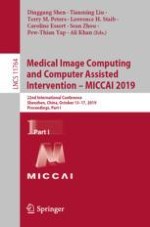2019 | OriginalPaper | Chapter
Uncertainty Guided Semi-supervised Segmentation of Retinal Layers in OCT Images
Authors : Suman Sedai, Bhavna Antony, Ravneet Rai, Katie Jones, Hiroshi Ishikawa, Joel Schuman, Wollstein Gadi, Rahil Garnavi
Published in: Medical Image Computing and Computer Assisted Intervention – MICCAI 2019
Publisher: Springer International Publishing
Activate our intelligent search to find suitable subject content or patents.
Select sections of text to find matching patents with Artificial Intelligence. powered by
Select sections of text to find additional relevant content using AI-assisted search. powered by
